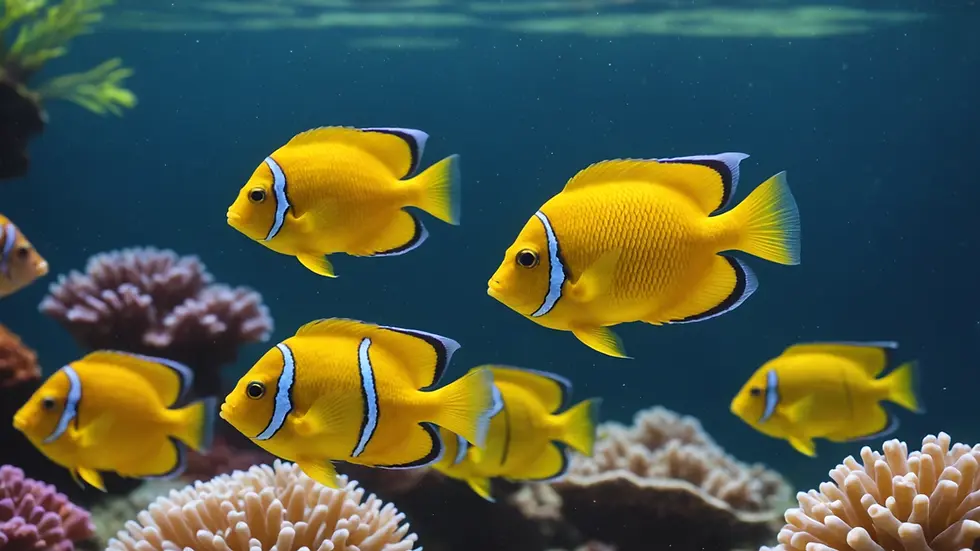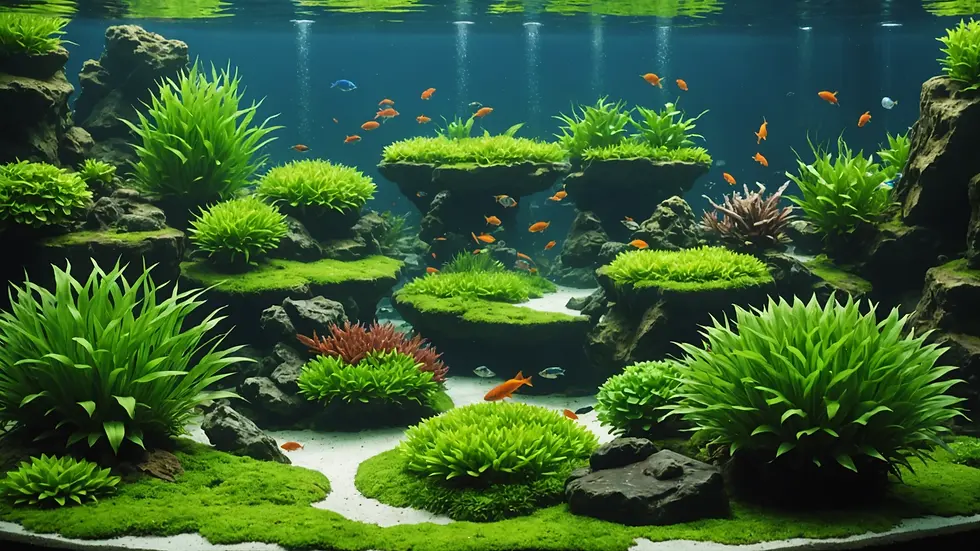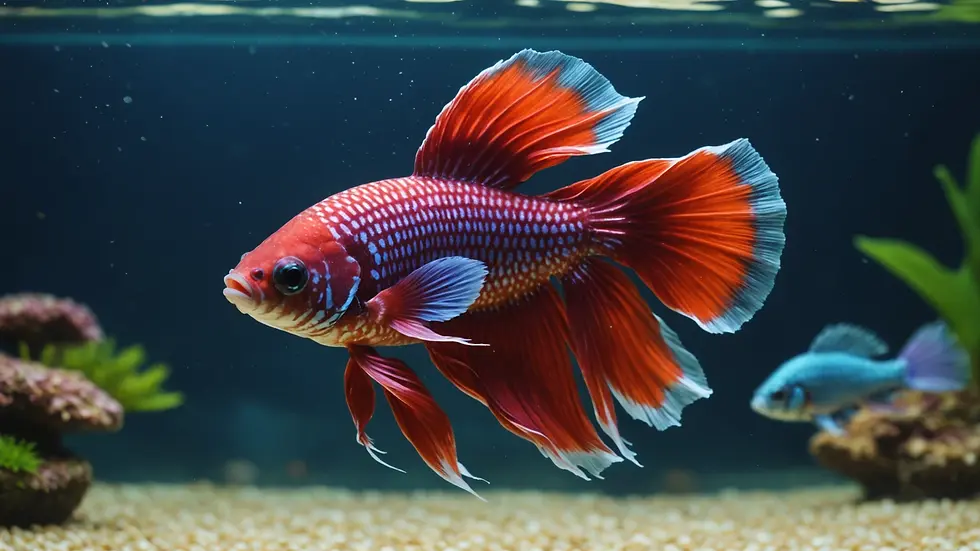Optimal Feeding Schedule for Healthy Fish: How Often Should You Feed Your Aquarium Friends?
- Jyotiraj Borah
- Feb 8
- 4 min read
Feeding your fish may seem easy, but it is vital for their health and happiness. The right frequency and amount of food can impact your fish's growth, behavior, and overall water quality. When done correctly, it creates a vibrant and thriving environment for your aquatic friends.
In this blog post, we will discuss how often to feed your fish, the factors that affect feeding schedules, and practical tips to enhance your fish care routine. Knowing your fish's needs is essential for keeping them healthy and active.
Understanding Fish Feeding Habits
Fish have different natural feeding habits based on their species. For example, herbivorous fish like tetras or goldfish often prefer several small meals throughout the day, mimicking their natural grazing behavior. In contrast, carnivorous fish, such as bettas or cichlids, typically require fewer but larger meals.
Knowing these habits is crucial when you develop a feeding schedule. Tailoring your approach to your fish's needs sets the foundation for maintaining a balanced aquarium ecosystem.
Factors Influencing Feeding Frequency
1. Species of Fish
The species of fish dictates much about their diet. For instance, omnivorous guppies thrive with several small feedings each day. Larger species, like certain cichlids, may only require one or two feedings weekly. A solid rule of thumb? Research your fish species to understand their specific dietary needs to optimize their health.
2. Age and Size
Younger fish usually need more frequent feedings to sustain their rapid growth. For instance, juvenile fish might benefit from being fed three to four times daily. Adult fish may require fewer meals, often just once or twice daily. Larger fish, with slower metabolisms, typically do well with fewer feedings.
3. Water Quality
Overfeeding is a leading cause of poor water quality in aquariums. Extra food decomposes, releasing harmful substances like ammonia that can harm fish. According to studies, maintaining good water quality can be achieved by following feeding schedules that prevent excess waste. Always feed only what your fish can consume in two to three minutes to help keep your water clean.
4. Activity Levels
Active fish may need more food compared to less active species. Keep an eye on how much your fish eat each feeding. If they frequently leave food uneaten, it may indicate that you need to adjust the feeding amounts or frequency.
5. Environment
The size of your aquarium influences how often and how much you should feed your fish. In smaller tanks, uneaten food and waste can accumulate quickly, making it necessary to feed cautiously. In larger tanks, conditions are generally more stable, allowing for slightly more frequent feedings. Tailor your feeding schedule based on the health of your aquarium ecosystem.
General Feeding Guidelines
Now that we’ve explored the various factors, let’s dive into some straightforward feeding guidelines to help create an effective feeding schedule.
1. Frequency
Most fish do well with one to two feedings a day:
Juvenile Fish: 3-4 times a day
Adult Omnivorous Fish: 2 times a day
Adult Carnivorous Fish: Once a day
Herbivorous Fish: 2-3 times a day
2. Portion Size
Only offer what your fish can eat within 2-3 minutes. Watching closely during feeding helps minimize waste.
3. Use Variety
Include various food types: flakes, pellets, frozen foods, and live options. This variety ensures your fish get the balanced nutrition they need.
Feeding Schedules for Different Fish Types
1. Tropical Fish
Tropical fish, typically omnivorous, thrive in warm conditions. A good feeding schedule may include:
Morning: Flake food
Evening: Frozen brine shrimp or bloodworms
This pattern mimics their natural eating habits and provides essential nutrients.
2. Goldfish
Goldfish are unique grazers and benefit from continuous feeding. A strong schedule for goldfish may look like:
Early Morning: Sinking pellets
Late Afternoon: Vegetables (like peas or spinach)
Due to their inclination to overeat, it's crucial to monitor their intake.
3. Betta Fish
Bettas are carnivorous and demand a high-protein diet. Their feeding plan can include:
Morning: High-quality betta pellets
Evening: Freeze-dried or frozen foods
Choosing the right food that resembles their natural diet enhances their health.

Signs of Overfeeding
Stay alert to your fish's behavior after feeding. Certain signs indicate potential overfeeding:
Uneaten Food: Large amounts left in the tank post-feeding.
Cloudy Water: Excess waste from food decomposition can lead to water issues.
Fish Behavior: Reduced activity or strange swimming may point to digestive problems.
If you recognize any of these signs, it's wise to revisit your feeding routine to adjust frequency or portion sizes.
Ensuring Healthy Fish
Establishing an optimal feeding schedule is crucial to keeping your fish healthy. Assess the specific needs of each species, considering their age, size, activity levels, and environmental factors. It's important to strike the right balance; follow portion sizes, observe their eating habits, and make adjustments as necessary.
With the right feeding approach, you can help ensure your aquarium friends enjoy long, vibrant lives. Embrace the art of fish feeding, and watch your underwater community thrive!






Kommentit